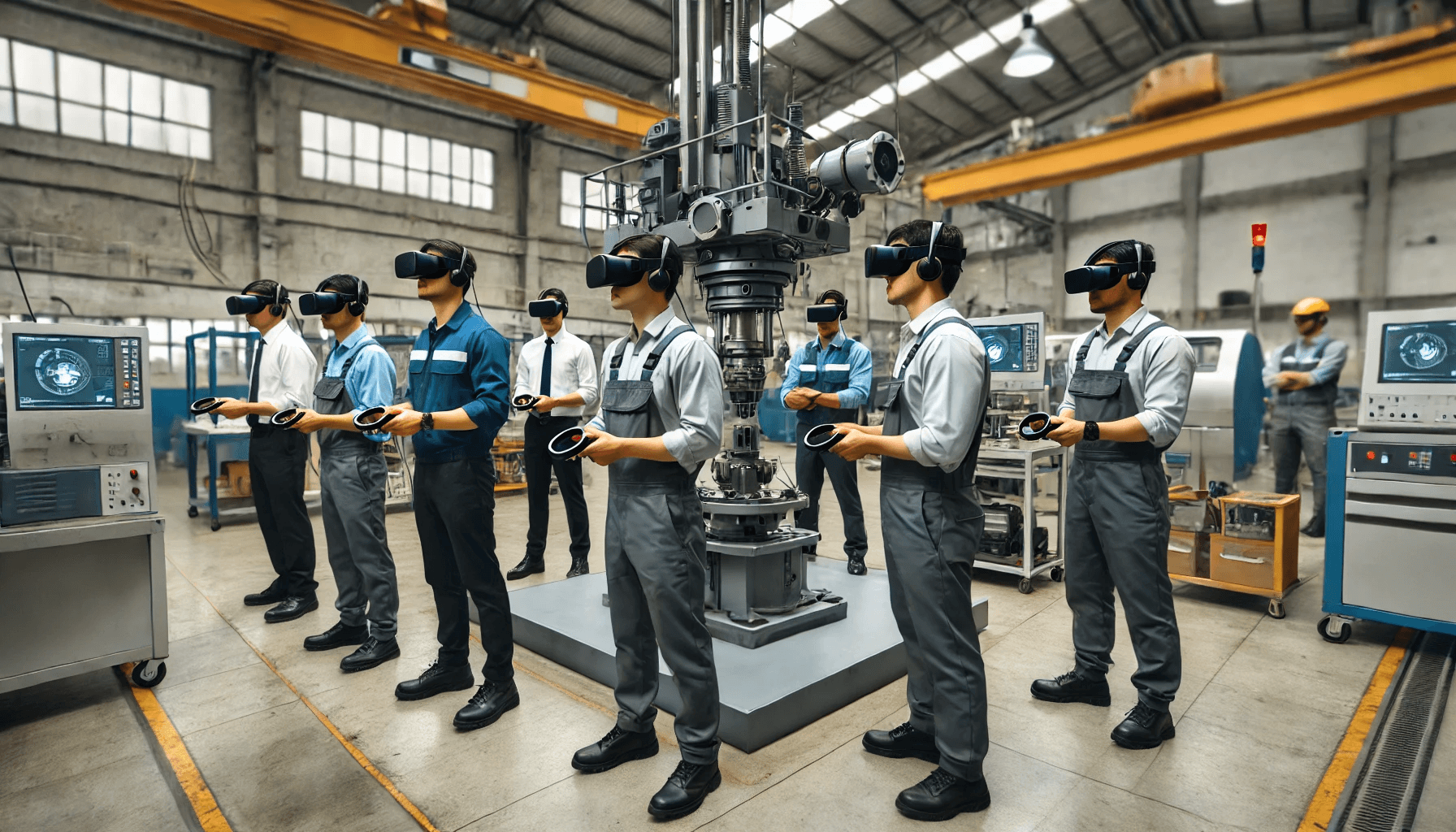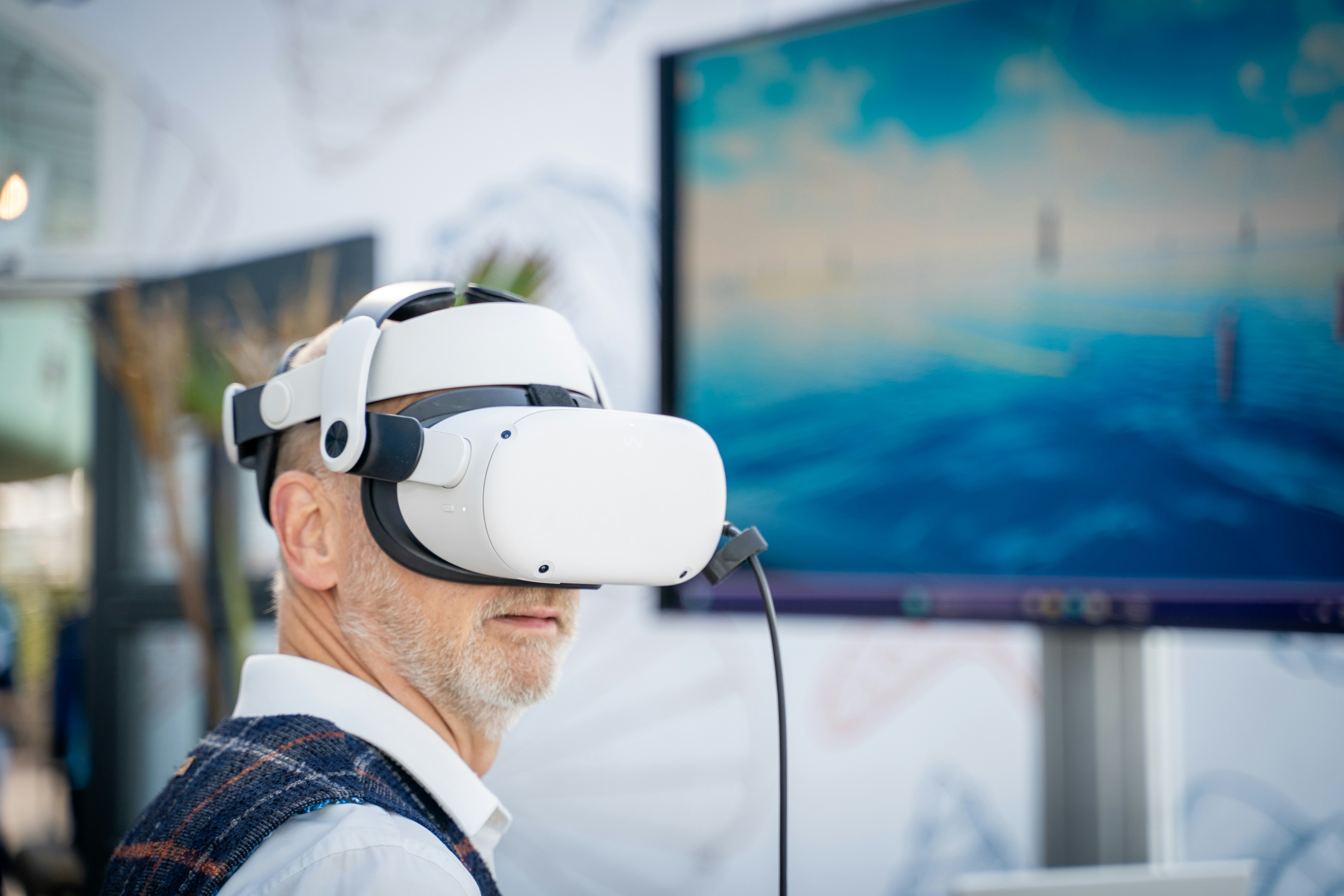To any VR enterprise ecosystem, the right VR headset is a vital ingredient. Because you cannot conduct training or other initiatives at scale with any random VR headset in the market. The wrong headset significantly diminishes the quality of VR experience and hence the quality of VR enterprise initiatives.
However, we live in an era of VR headset boom. Meaning, numerous companies are investing in and releasing capable VR headsets.
The amount of variety might at first glance seem intimidating. But nothing can be farther from the truth.
Because the amount of variety is what enables you to find and select the best VR headset that is tailored to your specific use cases.
So, without further ado, below are a few VR headsets that are apt choices for enterprises:
HTC Vive Pro 2
HTC has been a big player in the VR market for quite some time. Its Vive series of headsets is recognised to be among the most innovative and best VR headsets available in the market - both for personal and enterprise use cases.
The HTC Vive Pro 2 is the latest in the series. Boasting a dual display of 5k resolution ( the resolution of each lens stands at 2448 x 2448 pixels) and a 120Hz refresh rate, it is a marvel in terms of immersiveness.
To add to this, it also has a wider field of vision than its predecessor, with a 120-degree FOV.
In addition to the visuals, it also boasts 3D spatial audio. So, you can hear even the minutest changes in the audio and music, all synthesized in bright sound.
It is also a tethered headset. Meaning, it connects with your PC and uses its power to render the visuals. Being a higher-end VR headset in the market, it is capable of leveraging the full power of personal computers to deliver super immersive experiences.
You can also wear it for extended periods. A lot of this is thanks to the amazing weight distribution of the headset.
The HTC Vive Pro 2 sets a benchmark not just for its successors, but also for other top VR headsets in the market.
Ready to maximize your VR headset investment? Request a Free Demo of Our SaaS Tool VRseBuilder and see how it can transform your enterprise training.
Valve Index
Valve, the company behind Steam, also has a top VR headset of their own named the Valve Index. Like, the HTC Vive Pro 2, the Index is also a tethered headset.
The visual fidelity of the headset is top-notch. It features 2 RGB LCDs, each with a resolution of 1440 x 1600 pixels. In addition, it also has a refresh rate of up to 144 Hz, allowing you to see smoother visual experiences.
Furthermore, it has one of the largest FOVs among the best VR headsets in the market. The Valve Index’s FOV stands at 130-degree.
Of note is also the dedicated controllers that come with the headset. The controllers have 87 sensors that track finger movement. This means that it captures even the minutest movements of the hand and replicates it in VR.
Haptic support is also excellent in the Valve Index. You receive better tactile sensations as you hold and manoeuver objects in different VR experiences.
As for the comfort level, it can be worn for an extended period. This makes it one of the best VR headsets for enterprise use cases such as VR training and also for serious VR gaming.
Meta Quest 3
Meta has been at the forefront of VR headset development since it acquired Oculus in 2012.
Leading their march toward making the metaverse a reality is the Meta Quest series of headsets. The Meta Quest 3, is the latest in this series.
The Meta Quest 3 is a standalone VR headset. So like some of the top VR headsets in this list, you don’t need to connect to a PC to experience VR training modules and games.
It features the second-generation Snapdragon XR2 as the processor and has 8GB of RAM.
On the visual side, it has 2 LCDs, each of them boasting a resolution of 2064x2208 pixels. The headset also features a refresh rate of 120Hz
Adding to the visual fidelity are the pancake lenses. These slimmer lenses cause far less image distortion. Hence, it results in much clearer and sharper visuals.
The Meta Quest 3 also comes with 6DoF head tracking thanks to its array of cameras and sensors inside. Similarly, it also supports mixed reality experiences through its passthrough feature.
Curious about how VRseBuilder works with top VR headsets? Request a Free Demo to experience our AI-powered training platform firsthand.
Varjo XR-4
The Varjo XR-4 is a top-of-the-line VR headset. It supports both AR and VR experiences. It is the successor to the much-acclaimed XR-3.
The impressive headset features dual 4K displays and has a 90Hz refresh rate. In addition, it boasts a built-in headset that supports 3D spatial audio and also has noise-cancelling mics. The FOV of this top headset is on the higher side, standing at 120 degrees.
Of note are the Varjo controllers that come with the headset. These are manufactured by RAZER and elevate the overall experience of using the XR-4.
Though it can technically be used by consumers for personal use, the target audience of the headset is companies and enterprises, looking to implement use cases such as VR training.
Apple Vision Pro
The Apple Vision Pro is a VR headset from Apple. It is the first-ever headset from Apple and is dubbed a spatial computer that caters to diverse computing needs.
Powering the headset is not one, but two powerful chips. The R1 chip handles the real-time processing of sensor data such as camera feeds and motion. Meanwhile, the M2 chip, the main brain of the device, handles general processing.
In terms of visual fidelity, the Vision Pro features dual micro-OLED displays. Each eye receives clear visuals at 3660x3200 resolution.
To map the environment around you, the headset features 12 cameras, 6 microphones, and an array of LiDAR sensors. This enables the Vision Pro to track the environment and changes in it and to blend virtual elements with real-world settings.
You also don’t need a controller to interact with the headset. Instead, the headset uses eye-tracking and hand-tracking as input responses.
Finally, there is the VisionOS, a one-of-a-kind OS that Apple built from the ground up, especially spatial computing.
Overall, the Apple Vision Pro is one of the top VR headsets for enterprise use cases such as VR training. It is also a powerful personal computing device.
Interested in leveraging spatial computing for enterprise training? Request a Free Demo of VRseBuilder and explore advanced VR training possibilities.
Pimax Crystal
The Pimax Crystal is a VR headset that caters to the needs of both enterprises and VR enthusiasts.
It features a Qualcomm Snapdragon XR2 chip that allows you to use the device as a standalone. No PC connection is required.
In terms of visuals, the Pimax Crystal has dual panels of QLED + Mini-LEDs. Each has a resolution of 2880x2880 pixels. In addition, the headset also has a FOV of up to 130 degrees.
However, one of the most impressive features of the top VR headset is the interchangeable lenses. The Pimax Crystal comes with lenses that you can swap in and out. Based on your preferences, you can switch between aspects such as a sharper resolution and a wider field of view.
Pico Neo 4 Enterprise
The Pico Neo 4 Enterprise is aimed at business and professional use cases rather than personal, consumer use cases.
Like, the Pimax Crystal, it too features the Snapdragon XR2 chipset. On the visual side, it has LCD panels with a resolution of 2160x2160. Meanwhile, the FOV stands at 105-degree.
It also has 6DoF that frees you into moving in 360-degree.
Just like the Meta Quest 3, the Pico Neo 4 Enterprise also has pancake lenses. Meaning less distortion in terms of visuals.
Conclusion
You have to choose the right VR headset based on a myriad of factors. The names on this particular list, are just a start. There are lot more headsets on the market that are apt for diverse use cases.
No matter which headset you end up choosing, you have to do so based on consideration of requirements. These include not just the project requirements but also the budget you have and the scope of the initiative.
For instance, if you have a budget that is on the lower side, aiming for a higher-end headset might not be the right choice.
Ready to take your VR training to the next level? Request a Bootcamp and learn how to create, deploy, and manage VR content across multiple headset types with VRseBuilder.










